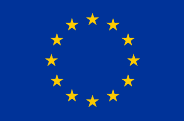
Safe non-food consumer Products in the EU and China
This factsheet applies to Cord extension sets. There are two types:
Both types are defined as cables for alternating current only, with a rated voltage above 50V and not exceeding 250V for single-phase cable reels.
This factsheet applies to cord extension sets with a voltage rating of between 50 and 1.000 V AC and between 75 and 1.500 V DC.
This section does not include guidance for cables which are attached to appliances, only those which are used to either extend a cable or offer multiple socket outlets, or both. These definitions are taken from technical standards which are referred to later in this Fact sheet.
This guidance does not include any information on the safety of plugs that form part of the extensions set, which is dealt with in the plugs and socket outlets factsheet.
The most common risks identified in this product sector are set out below.
1. Electrical risks
2. Thermal risks:
This is a list of examples of common risks. However, the manufacturer has to carry out an assessment of the cord extension sets that covers all relevant risks that may be associated with the product and actions taken to mitigate these risks where possible. A general definition of risk and its relationship to hazards can be found in the factsheet on Risk management.
Specific examples of measures taken against dangerous cord extension sets offered for sale in the European Union are available on the Safety Gate website. Type ‘cord extension set’ into the free text search box (but without the quotation marks) and select the ‘electrical appliances and equipment’ Product Category to view notified examples. A better understanding of mistakes made in the safety assessment on the cord extension set or its manufacture can help avoid their repetition.
Main applicable legislation
These products are governed mainly by the Low Voltage Directive (LVD).
The Directive lays down the safety criteria that all cord extension sets must meet before they can be marketed in the EU. Cord extension set must comply with the essential safety requirements set out in this Directive. More specific details can be found here.
In addition, if the electrical appliance and equipment is capable to communicate wirelessly (e.g. incorporates Bluetooth or Wi-Fi), it should meet the requirements of the Radio Equipment Directive.
Please also check the factsheet for Power Supplies, Chargers and Adaptors for safety requirements for the external power supply.
All other products (with a voltage rating below 50 V AC or 75 V DC) and risks not covered by the LVD, are governed by the General Product Safety Directive (GPSD). The Directive lays down that only safe consumer products can be marketed in the EU. Cord extension sets must comply with the general safety requirement set out in this Directive. More specific details can be found here.
“European standards” exist in the EU for cord extension sets. Cord extension sets complying with these standards are presumed to be in conformity with the essential safety requirements set out in the Low Voltage Directive if the standards are referenced in the Official Journal of the European Union (OJEU).
It is important to note that the latest edition of the standard referenced in the OJEU (including any amendments) applies.
Note: The full text of European standards can only be purchased from a national standardisation body. The following site of CEN CENELEC (the European standardisation organisation) provides links to the national standardisation bodies’ websites. In addition, the China Standards Information Services Network can be used to access European standards.
The following standard specifically applies to cable reels for household and similar purposes:
The EN 61242: 1997/A2 2016
There are various versions of this standard harmonised under the Low Voltage Directive:
These different references relate to the different amendments of the standard that, when respected provide presumptions of conformity. The most recent and relevant harmonised version published on the OJEU should be applied to your product to ensure that it is provided with the presumption of conformity.
As this standard only deals with reeled (coiled) cables it is also necessary to consult other standards including:
IEC 60884-1:2002+A1:2006+A2:2013
This standard applies to ‘Plugs and socket outlets for household and similar purposes’ and is applied to extension cords which are not coiled. This standard is not harmonised (and therefore compliance does not offer the presumption of conformity with legal requirements) and should be consulted in conjunction with other relevant standards such as EN 61242:1997 when designing and producing coiled cord extension sets that comply with the European health and safety requirements.
EN 62311:2008
The standard describes measurement methods and safety requirements related to human exposure restrictions for electromagnetic fields (0 Hz – 300 GHz).
However, the standard series covers other safety issues and manufacturers are strongly advised to consult the whole standard.
The following summarises some further key applicable laws:
The following are obligatory:

Safety warnings and instructions are obligatory for many types of cord extension sets to draw attention of users to risks and how to avoid injury.
To ensure that manufacturers produce only safe cord extension sets, there are also a range of general requirements to be fulfilled. These are explained in the following factsheets and need to be read in conjunction with this factsheet:
You may also visit the SPEAC ACADEMY to learn more about the EU Safety requirements.
The provided information was updated in 2022. Please note that some of the provided information could change during possible subsequent revisions of legislation, standards, and guidance documents. For any updates of official information on the EU product safety rules, please follow the Link to the webpage of the European Commission.
This document was produced with the financial support of the European Union. Its contents are the sole responsibility of SPEAC project and do not necessarily reflect the views of the European Union.

This website was created and maintained with the financial support of the European Union. Its contents are the sole responsibility of SPEAC project and do not necessarily reflect the views of the European Union.